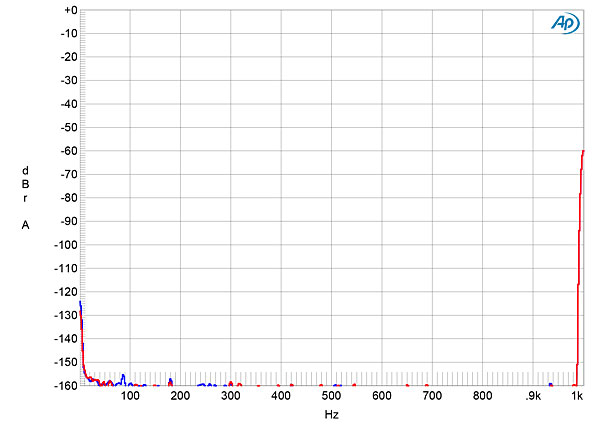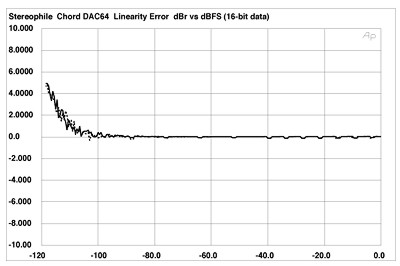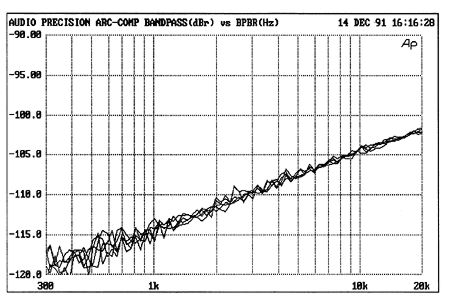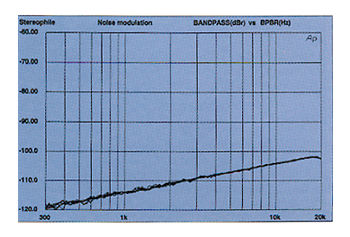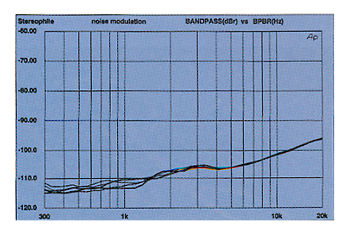The APx555 is a much better instrument than the SYS2722. Chord have one, and when they measure Dave they get -118dB DR - as opposed to -128 dB with Dave into the APX555. The SYS2722 is simply inadequate to measure Dave - indeed John Atkinson confirmed to me in January that they have now acquired an APx555, so I hope to see updated measurements. But even the APx555 has a tough time with Dave, and I am unsure how much THD is actually down to the APx555, as Dave's level is at the innate level of the 555... It's one reason for the Davina ADC project, so that I can get better measurements.
One factor that is crucial is noise floor modulation. I make a great thing out of the unmeasurable noise floor modulation character of all my DAC's, but on all other DAC's one can see huge levels of noise floor modulation. This is highly significant from a SQ POV, and I hope that this metric becomes more widely appreciated and understood, as it is for sure one of the top 3 performance indicators that correlate with subjective sound quality with DAC's.
As to your point about the noise shapers performance at -350dB. This is of course the digital domain performance of the digital path. And to measure this I use Verilog simulation. Note that a Verilog simulation is not a model or an estimation; it is the actual performance of the digital module; so if you put in a set of data, you are guaranteed to get that data in real life. The beauty of using a Verilog simulation is that once the data is passed through a FFT (in my case a 4M point FFT) one can see extremely small levels of distortion and added noise, to a performance level one could never measure on a real instrument, as analogue noise would dominate. This gives the designer incredible power to measure incredibly small aberrations and then too evaluate the sound quality changes by adjusting these aberrations. From this I have learnt that the ear/brain can resolve incredibly small aberrations - to a level that would be always be unmeasurable.
To give you an idea on this, here is the digital domain performance of the DAC within Dave:
My digital domain benchmark is that it must be capable of resolving a -300.99 dB signal to perfect amplitude accuracy, as this correlates with subjective depth performance (and I have done this test dozens of times with lots of different digital modules, and the depth perception always correlates with 350 dB digital domain performance). -350 dB THD and noise performance for a noise shaper is an insane level of performance as the best digital domain performance I have seen quoted by chip companies is only -140dB.
I ought to add that of course Dave will not show -350 dB in real life, as analog noise will swamp this performance. But it is important, as depth perception is totally dependent upon the DAC's ability to accurately resolve small signals amplitude perfectly, and this in turn will depend upon the noise shapers ability to resolve minute signals. The analog noise with Dave is at -128 dB; I could get better than this, but this would be at the cost of higher THD, which is damaging from a SQ POV. Moreover, the APx 555 can't measure better than -133 dB anyway, and the noise level is so low that it is immaterial subjectively - it's only when noise changes with signal that it becomes important, and as already discussed, the noise change with signal is unmeasurable.























